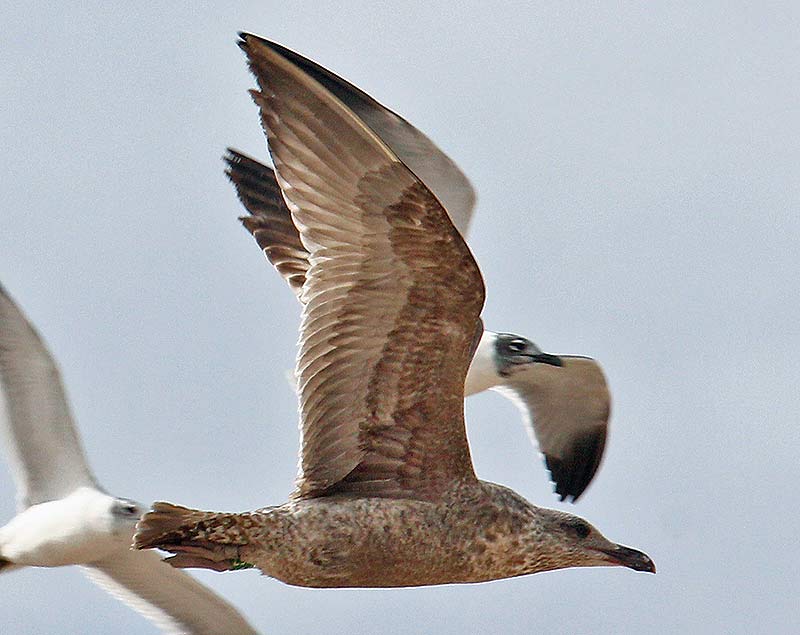 American Herring Gull (smithsonianus)
American Herring Gull (smithsonianus)
(last update: October 30, 2015)
American Herring Gull (smithsonianus) 1st cycle (2CY) V57 February 02 2013, Brownsville landfill, Cameron County, TX. Picture: Martin Reid.
See website: The Gulls Of Appledore
Herring Gull V57, banded as a chick on July 19 2012. Still near Appledore on July 22, but seen since, and now turned up in Texas (this is the western-most sighting ever for Appledore Herrings). Note replaced body feathers (which are fresh, grey-based unlike the old brownish juvenile feathers) located in side of the breast, neck, face and flanks.
This bird was banded as a chick in July 2012, was observed at Brownsville Municipal Landfill in Brownsville, TX in February 2013, and then seen at Reeds Beach in Burleigh, NJ in May 2013! Generally, it’s thought that hatch-year gulls disperse relatively long distances from the location where they hatched. Is this a general rule for Appledore gulls? The more off-island resights we accumulate, the better equipped we will be to answer this question.

Martin Reid wrote: “It was incredibly lucky for me to get these data, as at the time I took the pics, I was trying to photograph a presumed Nelson’s Gull (Herring x Glaucous hybrid) among a large group of gulls that took-off suddenly. When I looked at my photos later, I realized that I had gotten the ‘wrong’ (maybe not!) bird and noticed the bands on its legs.”
V57 was banded as a chick on July 19 2012 on Appledore, Maine. He or she was the “A” chick, meaning it was the first of its nest-mates to hatch. V57 traveled quite a distance after fledging! Interestingly, both V57 and V66 hatched in 2012 and dispersed to Texas for the winter. These two birds came from nests located on the main campus of the Shoals Marine Laboratory (see Map tab). V57's nest was near Laighton and V66's was on the road from Bartels to Kiggins Commons. We’ve often wondered if birds that nest near one another learn various behaviors from one another. For example, do neighbors use the same foraging or dispersal sites? It’s also possible that neighbors are related to one another and, as a consequence, have inherited or learned similar behaviors. With enough data on dispersal and genetics, we may be able to investigate these questions.

